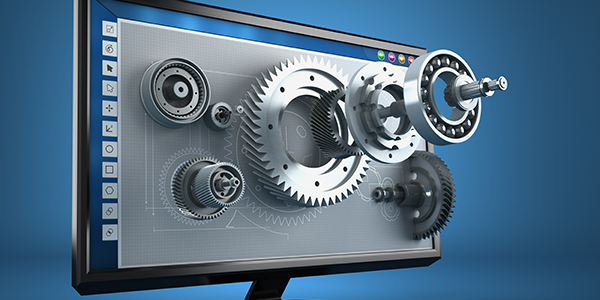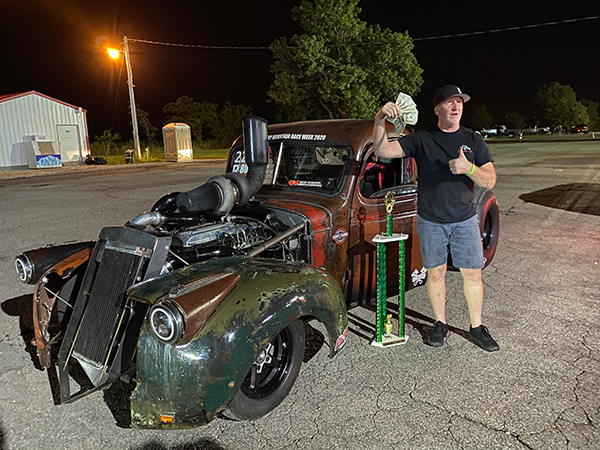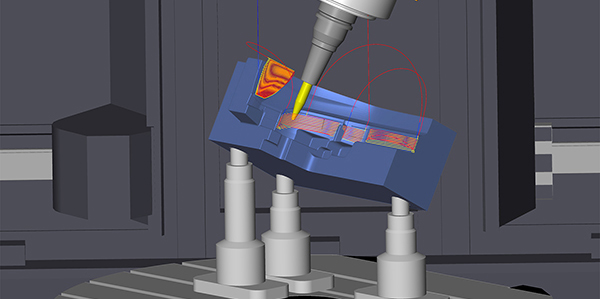I’m at the perfect age: old enough to know better, but still young enough to try. That also means that my generation is old enough to remember the sound of a typewriter, rotary phones, factory carburetors, and we got in on the ground floor of the PC revolution.
Nowadays, everyone has a smart phone in their pocket that has more computing capacity than the Apollo space program, and there seems to be an app for everything. That being said, it may surprise you to know that engine building software has been around for well over 30 years. I’ve had quite a bit of experience using a number of these programs and I’d like to share some highlights that you and your shop may find useful.
I recently spoke with some of the titans of the industry and here’s what I’ve learned about software they’ve designed and offer to help engine builders build better engines.
Induction Optimization Program
This software is built on dyno experience and not just theory. David Vizard has an incredible amount of experience building engines and has run hundreds of thousands of dyno tests. Those tests plotted out on a graph and the resulting trend lines are the basis of his software, not some hypothetical theory based out of a book written when steam engines ruled the rails, but actual real world tests in modern times. To get the software, you have to take his seminar – though the software is provided at no additional charge.
Some seminars start off with the basic building blocks of a subject, whereas Vizard and team know that if you’re serious enough to be there and commit, you’ve already mastered the basics of engine building and they jump right into the meat of the subject, so no time is wasted. It’s a refreshing break from the norm.
The seminar isn’t run with a strict agenda and schedule, but David speaks to the students person-to-person and helps guide each individual to their goals while herding the entire class toward higher knowledge of the finishing touches that polishes your engine building program to keep a leg up and a few car lengths ahead of your competition.
Each seminar is geared to knowledgeable professionals. Novices need not apply. Know your stuff when you get here, or you’ll already be behind. My best suggestion is to read some of David’s many books written on a variety of engine building subjects (or some of his past articles in Engine Builder magazine!). I’ve been reading his books since before I could (legally) drive, and meeting him is such a treat. He’s got a great accent and the BEST stories.
In the seminar, once you’ve covered the subjects thoroughly enough to gain full understanding of the different variables and how they each can affect each other, you’re shown how they plug into the software and get you the results you’re looking for. Many variables that you’ve heard of over the years, like port mach numbers and specific port energy density are clearly explained and you’re given real world applications of how to use them to your advantage. One of my favorite features is the series of pop-up boxes that offer suggestions that steer the user to the optimum port characteristics.
David and his team are continuing to develop their software packages to help you get the parts you need and optimize that combination of parts and machine work to achieve and exceed your goals. The software is so easy to use and understand, you can have much lesser skilled employees use it to answer questions, specify and quote parts, and take care of your customers while your skills are better utilized elsewhere. Much of the ongoing development is adding information into the software that reflects real world experience. As you can imagine, taking 50 years of experience and putting it into an easy-to-digest format is no simple task. While the mathematics might be virtually the same across software providers, these are the little differences that are immeasurable.
They are expanding their education program to include an intense head porting seminar starting soon. This very specific training will show you how to further utilize their software and take your head porting game from a shot-in-the-dark art to quantifiable science. For more information, contact the Vizard team at: http://www.davidvizardperformanceseminars.com/
Engine Analyzer Pro
I’ve been using this software for well over 15 years. Performance Trends started off in 1986 with the Drag Race Analyzer program, followed shortly by the Engine Analyzer software. They’ve been around the track quite a few times since then. Kevin Gertgen at Performance Trends offers more than 20 different programs that each complement the other, and about a dozen or so more programs that are combined with proprietary equipment for specific analysis and data logging.
For instance, you can import files and data directly from your Cam Analyzer or Port Flow Analyzer into your Engine Analyzer program for exact calculations, then drop that virtual engine build into your drag race or circle track analyzer program for a complete picture. I am not aware of any other software bundles that allow such complete data sharing seamlessly. Just like G.I. Joe taught us all as kids: knowing is half the battle.
As I discussed with Kevin, this is a great tool to help you get closer to your goals. This is a tool like any other, to be used as an integral part of your engine building program. Many people in our industry might not be as comfortable clicking a mouse as they are a torque wrench, but I assure you the results will make you a believer. From my experience, the virtual calculations have always fallen within 0.5% of actual dyno testing, all of which are well within the margin of error of any dyno. So when your real world dyno pull doesn’t show similar results to your virtual pull, you know to look for a problem.
In many engine building situations, you’re working under a tight set of rules and you’re limited by a number of factors, (air flow, carb size, intake, compression, valve size, etc.), so you really have to look closely at any other available opportunities to make (or conserve) power. I’ve searched the marketplace and not found any software that lets you input as many parameters as this one. There are thousands of inputs available that can affect your virtual engine build. The beauty of this software is that you don’t have to be overwhelmed by that and can choose from a huge library of builds that already have that information detailed for you. That library is constantly growing with new applications as well.
One other neat feature of the Performance Trends software suite is the ability to do chain calculations. For example, if you’re in a racing class that limits cam lift, but you can vary lobe separation or ramp speed, you can set the chain calculations to test and change a variable and then continue to test for you. So instead of making one change and running a simulation dyno pull, then doing that over and over manually each time, you can set the program to make those changes for you. So you can test something like all the lobe separation angles from 108 to 117 by half a degree at a time. You just go back through the results, find what you’re looking for and you’re there.
It doesn’t matter if you’re measuring swirl from an intake port, camshaft lobe geometry, suspension setup, shock valving or just data logging at the track – Kevin and his team at Performance Trends have software programs to meet just about any need. They even offer packages to help you retrofit older equipment, build your own custom or budget equipment, or replace obsolete electronics far less expensive than most OEM solutions.
To check out the full array of software available from Performance Trends, visit their website: http://www.performancetrends.com
ProCalc and ProTune
We’ve discussed quite a bit about virtual engine builds and all the variables and inputs you can use. One variable that can make a huge difference is weather. If the air density or temperature changes much, you can see huge effects on the power output and tuning. Some of the software allows you to input these variables, but what happens when you’ve actually got your engine built and you’re ready to race? You need to be able to make tuning changes to match current conditions. The answer to that can be found at http://airdensityonline.com where you’ll find links to ProCalc and ProTune.
ProCalc and ProTune were created by father-daughter duo Bob and Jennifer Szabo in order to help racing teams get the best jetting for their MFI combination.
Bob Szabo is a retired welding engineer, long-time drag racer, and author of six books about racing mechanical fuel injection at RaceCarBook.com – he has also written several articles for Engine Builder. Bob has decades of experience in the automotive industry and as a drag racer. He has put that experience together in order to assist racers with their engine setups.
The ProCalc and ProTune website, accessible through a smart phone or other web-connected device, provides current air density information including air density, grains of water and air density forecasts for hundreds of racing facilities around the world. Their programs will help you utilize that weather data that is collected from multiple sources, and tune your setup for maximum performance.
So far, these are very in depth programs for the dedicated professional OR the really smart engine builders and racers who don’t want to waste time or money. While some may see the cost of the programs as a large expense, I’m here to tell you that the money saved will FAR outweigh the money spent.
But even if you’re on a budget, engine building software isn’t out of reach for you. There are a number of affordable and even free software products out there for you and some OEMs even offer their software to help you best match their products to your application.
CamQuest
CamQuest is one product selection program that allows you to quickly and easily drop in some basic vehicle and usage parameters – it will then populate a selection of COMP Cams that will greatly narrow down your search time. Oh, the hours of my youth I spent flipping through cam catalogs and lobe profile charts are now just a click or few away! These selections will help, especially those situations that aren’t so common, like blower applications, high stall convertors, or high torque/low rpm tow vehicles. Go to http://www.camquest.com/ to get started.
There are a number of other consumer-aimed dyno programs for the curious gearhead. These are generally priced under $100. COMP Cams lets consumers use CamQuest for free, but they have also purchased a number of other engine and cam simulation software with greater capabilities that are for sale: Desktop Dyno 5, Dyno 5 Sim, Dynomation, as well as a few racing software programs as well. Other websites with software offerings and programs worth mentioning are: www.quarterjr.com, www.gtisoft.com and www.virtualengine2000.com. These also offer multiple programs for different applications.
They look good and have a few bells and whistles not available with freeware. I’ve never really been into video games, but I have spent countless hours building virtual engines just to see what is possible, but you don’t always have to spend a lot to get a lot.
EngineBuilderProfessional
Another great program is found at http://enginebuilderprofessional.com. Brandt Hulderman developed his software to address a need that he couldn’t find in the marketplace at the time. His search for piston to valve clearance led to the development of this software and then he kept at it and added all kinds of calculations. This guy actually IS a rocket scientist. Seriously! And super nice, too!
The craziest thing? He offers his software free of charge, and even gives technical support, too. For example, the different modules of the program are written so that inputs meet real world possibilities. (As an example, you can’t put a 6˝ intake valve in a 4˝ cylinder bore). As the trend of building big-inch small blocks continues to grow, he got a call from a guy building an engine that had dimensions outside what the software was originally designed to do, so Brandt promptly rewrote those parameters to help that guy and the engine building community as a whole.
“I’m an aerospace engineer by trade, but paid for my education as a certified engine repair mechanic and engine builder,” Hulderman says. “Over the years, I’ve written code for helping in my engine building, and recently, within the past few years, developed some software and started giving it away for free, in hopes people will become more involved in engine building. I started this simulation for estimating piston to valve clearance, and just added the capability for estimating camshaft to connecting rod clearance, given camshaft lobe diameter, connecting rod length, crank stroke, and crank to camshaft centerline distance.”
Now there’s no excuse for not utilizing a tool this powerful for free. Kudos to Brandt for helping the engine building community at large for nothing more than the love of our industry. Very much appreciated sir!
The aforementioned programs are for the competitive and curious, but what about the company that rebuilds just about anything that comes through the door? Well, there are applications for that, too.
AERA offers its Prosis Engine specification program to members of the association. The program gives more than 9,000 engine specs from 150 manufacturers covering all sorts of applications. Casting number searches let you know exactly what you’re dealing with, and it also has thousands of technical bulletins so you can keep your repair or rebuild on track. It also has a customer database so you can create estimates, work orders and invoices. Having all this in one place saves you time and definitely makes things more efficient, so if you’re a shop that can handle all types of builds and not just a specialty, then this is perfect for you.
For more information, visit www.aera.org.
So the takeaway from all this is that regardless of your area of expertise, there is software available to help you. These tools will save you time and money and convey to you years of experience that you could spend a lifetime in search of and still not achieve. Just like most tools, your skill and proficiency will increase with time and experience, and the right tool for the right job, makes everything easier.
Don’t be afraid to give it a shot. Most of the programs offer a free trial or a limited edition version that you can test. You can go as basic or complicated as you’d like, but the important thing is to get started using these powerful tools.











